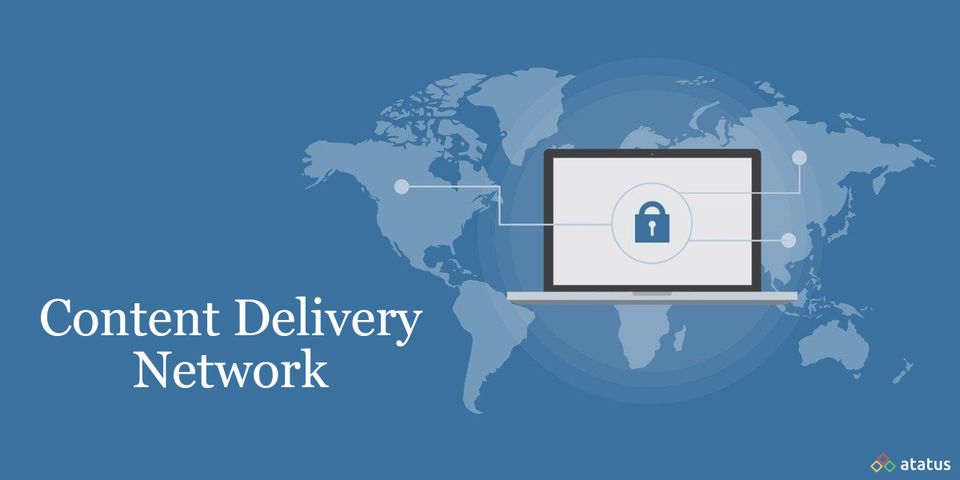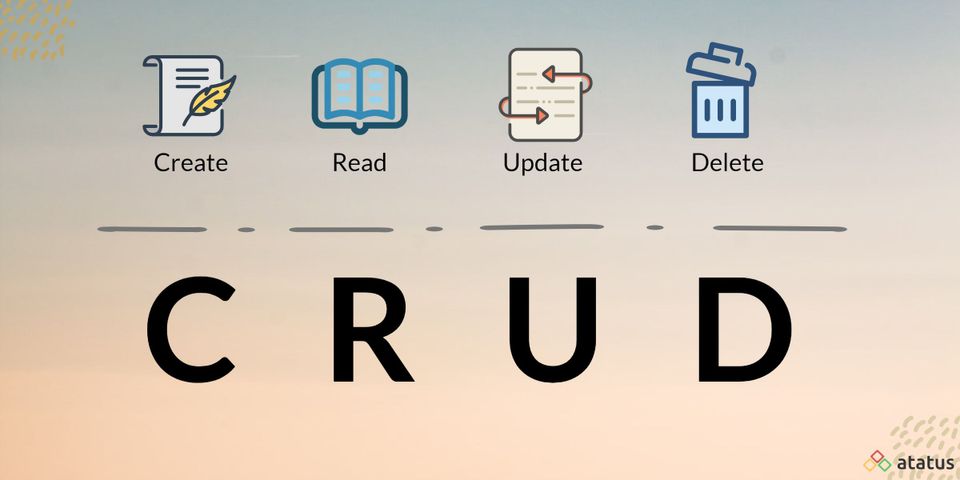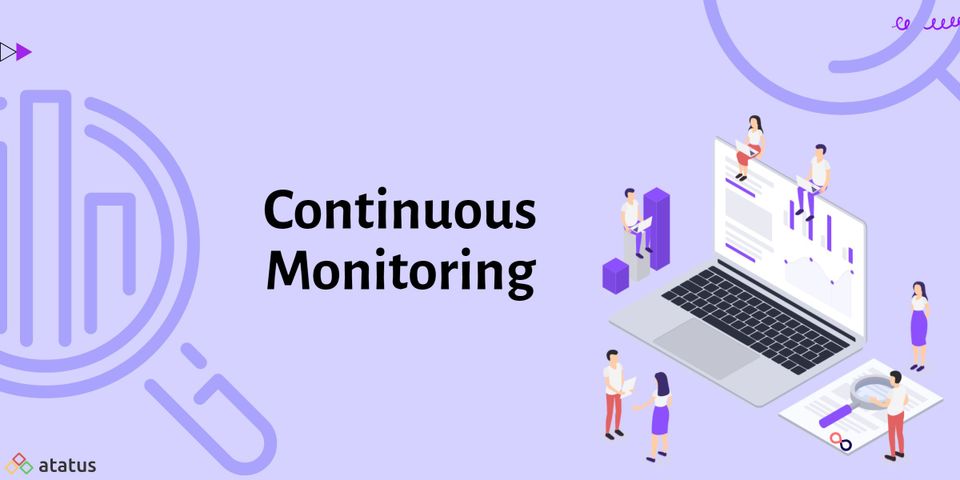CDNs were designed about two decades ago to address the problem of rapidly delivering large amounts of data to end-users via the internet. They've evolved into the driving force behind website content delivery, companies are still researching and improving by academics and commercial developers. The first Content Delivery Networks was established in the late 1990s, and they still account for 15-30% of global internet traffic.
We will cover the following:
What is a Content Delivery Network (CDN)?
A content delivery network, or CDN, is a network of edge servers strategically located throughout the world with the goal of delivering digital content to users as quickly as possible. When a user submits a request, it is routed to the nearest CDN edge server, which reduces latency dramatically. A CDN enables all users, regardless of their geographic location, to get fast-loading content for an undeniably better experience.
Caching servers, which store and send cached files to speed up webpage loading times and reduce bandwidth consumption, are also used by CDNs. Each CDN server is situated at the "network edge," meaning it is closer to users than the host server, which is where the website originates. CDN servers are commonly referred to as "edge servers" because of this.
Each server saves or caches a subset of the web content from the host server, such as HTML files, pictures, audio, video, and applications. The content delivery network enables the website publisher to provide faster performance, reduce loading time for its users, and control its own bandwidth consumption and expenses by reducing the distance between this content and users. CDN services are often purchased through CDN providers, which run their own server networks.
How does CDN Work?
CDNs work by reducing the distance between a user and the source of data (a web or an application server). It involves a worldwide distributed network of servers that keep content considerably closer to the server than the source. Examining how a user obtains web content from a website with and without CDNs can help you understand this better.
Without a CDN
When users enter a webpage into their browser, he/she creates a connection that looks like the one seen below. The Local DNS or LDNS converts the website name to an IP address. If DNS or LDNS is unable to resolve the IP address, it will recursively seek resolution from upstream DNS servers. Then, the request may be forwarded to the authoritative DNS server that hosts the zone. The address is resolved and returned to the user by this DNS server.
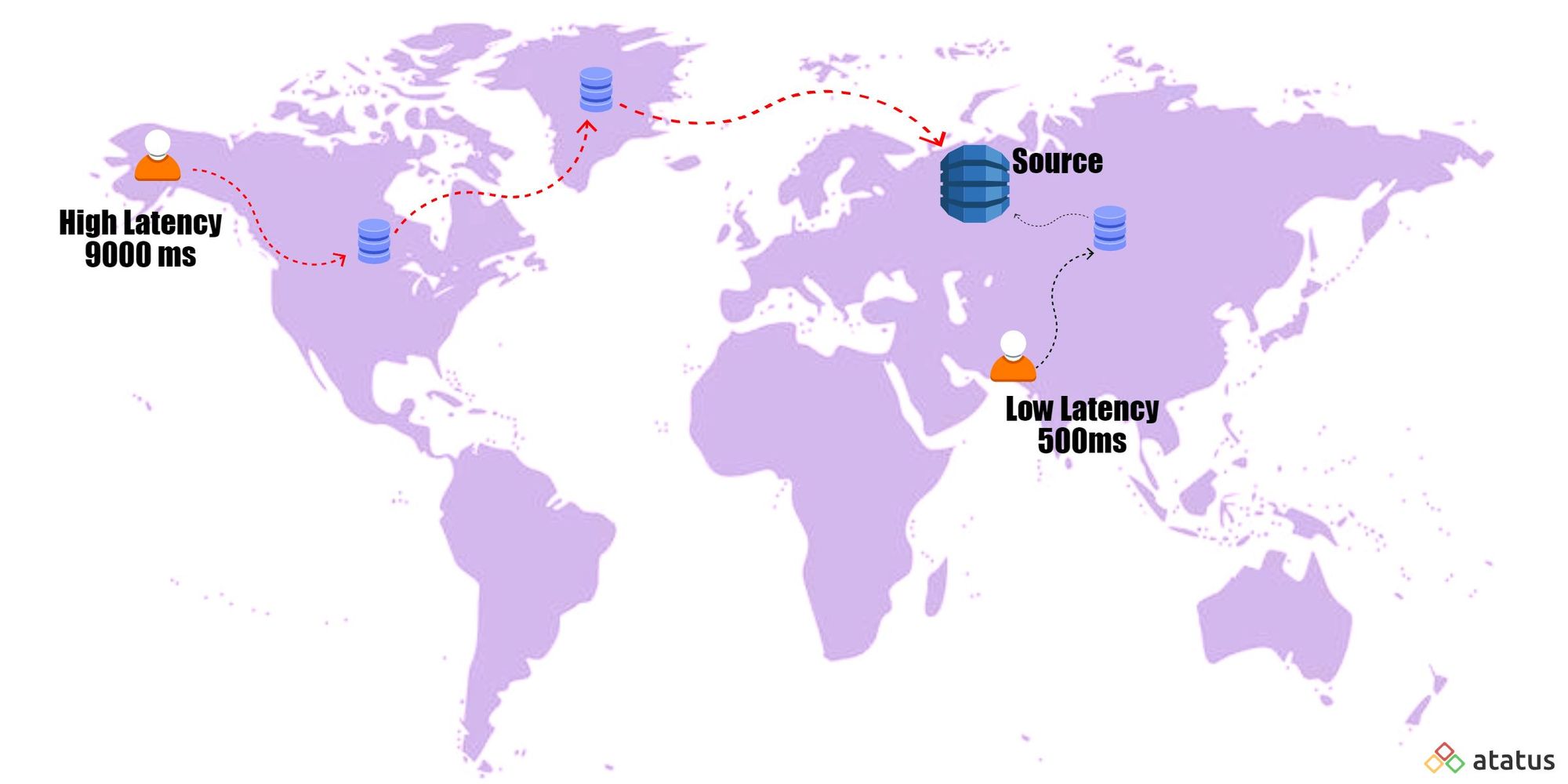
The user's browser then establishes a direct connection with the source and downloads the website's content. The source serves each successive request directly, and the static assets are cached locally on the user's system. If a user from a similar or different location tries to visit the same site, the same sequence will be followed. User requests will be sent to the source every time, and the source will respond with content. Each step adds a delay, or "latency," to the process. Response times will suffer from high latency if the source is located far away from the user, resulting in a bad user experience.
With CDN
However, when a CDN is present, the approach is slightly different. When his LDNS receives user-initiated DNS requests, it sends the requests to one of the CDN's DNS servers. The Global Server Load Balancer (GSLB) infrastructure includes these servers. The GSLB helps load balancing functionality by measuring the entire Internet and keeping track of all accessible resources and their performance. The GSLB uses this information to resolve DNS requests by using the best-performing edge address. A group of servers known as "edge" caches and delivers web content.
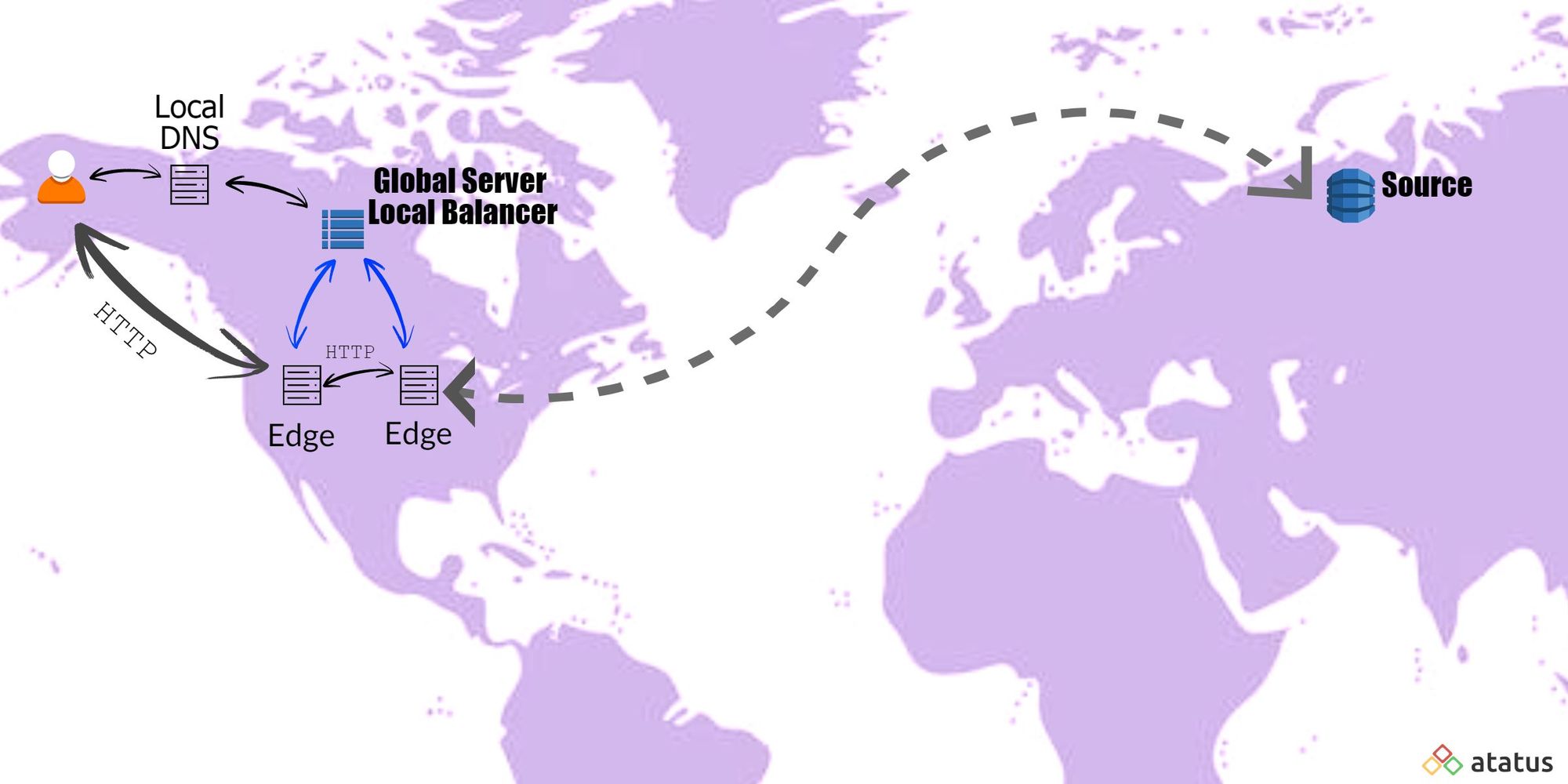
The user sends an HTTPS request to the edge after DNS resolution is complete. When the edge receives a request, the GSLB servers assist the edge servers in forwarding the request to the source through the most efficient path. The edge servers then retrieve the required data, send it to the end-user who made the request and store it locally. Without having to ask the source server again, all subsequent user requests will be delivered from the local dataset. Even if the source becomes inaccessible for any reason, content stored on the edge can be transmitted.
Benefits of CDN
For web publishers, CDNs offer faster load times, lower bandwidth consumption, and among many other benefits:
- Better Connectivity and Scalability
A content delivery network allows users to access content more quickly. This translates to more page views, traffic spikes, improved customer engagement, and lower site abandonment for web publishers. - Higher User satisfaction
Users abandon and/or avoid websites for a variety of reasons, including slow load times, challenges with media playback, and application responsiveness. Working with a content delivery network can help you avoid or minimize some of these performance difficulties, increasing the likelihood that content consumers will be satisfied with their interactions with your site. - Increased Reactivity to Traffic Spikes
A successful marketing campaign, a limited-time offer, or a viral video—events like these might cause an unexpected rise in content demand. To avoid overloading any single server, content delivery networks employ load balancing to distribute demand between servers. Load balancing also protects a website's performance from demand spikes or surges. - Improved Content Delivery
CDNs improve the quality of content as well as the speed with which it is delivered. Slow transmission can obstruct video replay, video calls, and live video streaming, resulting in jitter. Video and audio content delivery are also hampered by buffering, poor image and sound quality, and partial transmissions. Content delivery networks help in the reduction of the distance between the content and the user, as well as the load balancing of traffic to avoid overloading routers or servers. - Reduce Bandwidth Consumption
Organizations are charged by web hosts for data sent from the source server. A CDN allows for fewer data transfers from the source server by storing copies of content closer to the users, lowering bandwidth consumption and expenses. - Reduced Latency
The time between when data is requested from a system and when the system actually starts delivering it back is referred to as latency. Latency increases as the distance between a user requesting web content and the server serving it grows. Content delivery network servers can reduce latency and increase performance by storing web content caches closer to your users. - Infrastructure Support by a Third-party
An organization can save time, money, and resources by relying on a CDN instead of creating and maintaining its own geographically distributed server network. - Enhanced Security
Analytics and automation technologies are used by content delivery networks to detect distributed denial of service (DDoS) attacks, man-in-the-middle attacks, firewall issues, and other threats. - Faster E-commerce
E-commerce consumers demand fast product image load times, quick payment method approvals, and simple purchases on any mobile or desktop device while buying online. During peak traffic periods, content delivery networks enable B2C and B2B retailers to provide e-commerce content and applications quickly.
Why Use a CDN?
CDN is a simple approach to boost a website's performance while simultaneously minimizing latency. As a result, they're critical for delivering content to users all over the world in a timely, efficient, and secure manner. This content isn't restricted to website content; it can also include 4K and HD-quality video, audio streaming, applications, games, and operating system updates. With website visitors' attention spans shrinking by the day, it's critical to get this content to them as soon as possible.
As more businesses go online and the world connects on the Internet to shop, connect, and share, content providers face a growing number of challenges, including delivering various types of content, adjusting the content for various device types, and securing data and their end users' online presence. Because of the inherent characteristics of a content delivery network, CDN providers are particularly positioned to assist organizations in overcoming these various media distribution difficulties.
CDNs have been the unseen backbone of the Internet for nearly two decades, providing online content for retail, banking, healthcare, and other companies to end users all over the world at high speeds and scale. Whether you realized it or not, you've profited from a CDN if you've done practically anything online.
Conclusion
Your business will benefit from a modern CDN platform in a variety of ways. It can be used to control access from various parts of the globe. You can grant access to specific places while denying access to others. You may quickly move application logic closer to your clients by offloading it to the edge.
Monitor Your Entire Application with Atatus
Atatus provides a set of performance measurement tools to monitor and improve the performance of your frontend, backends, logs and infrastructure applications in real-time. Our platform can capture millions of performance data points from your applications, allowing you to quickly resolve issues and ensure digital customer experiences.

Atatus can be beneficial to your business, which provides a comprehensive view of your application, including how it works, where performance bottlenecks exist, which users are most impacted, and which errors break your code for your frontend, backend, and infrastructure.

